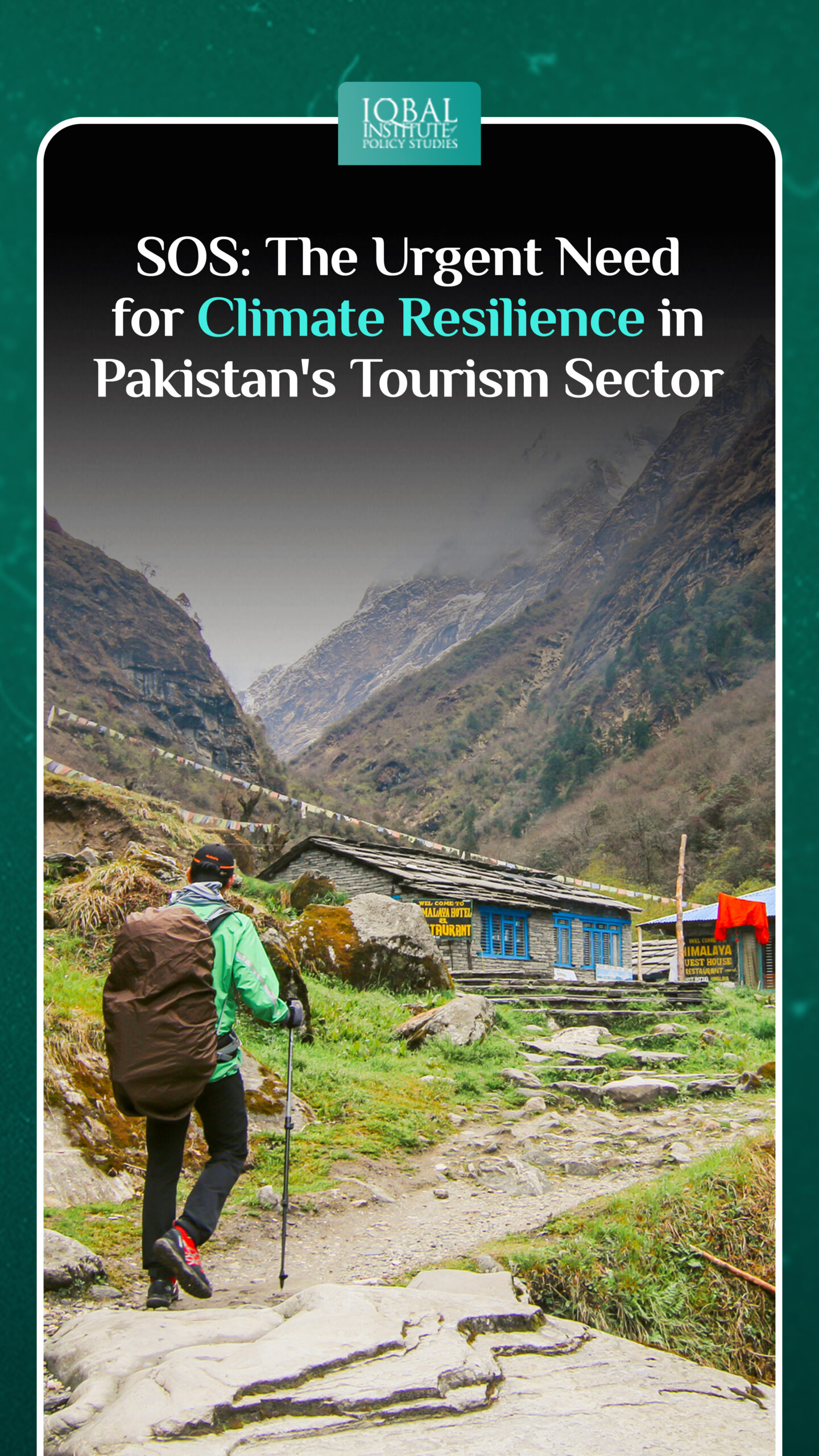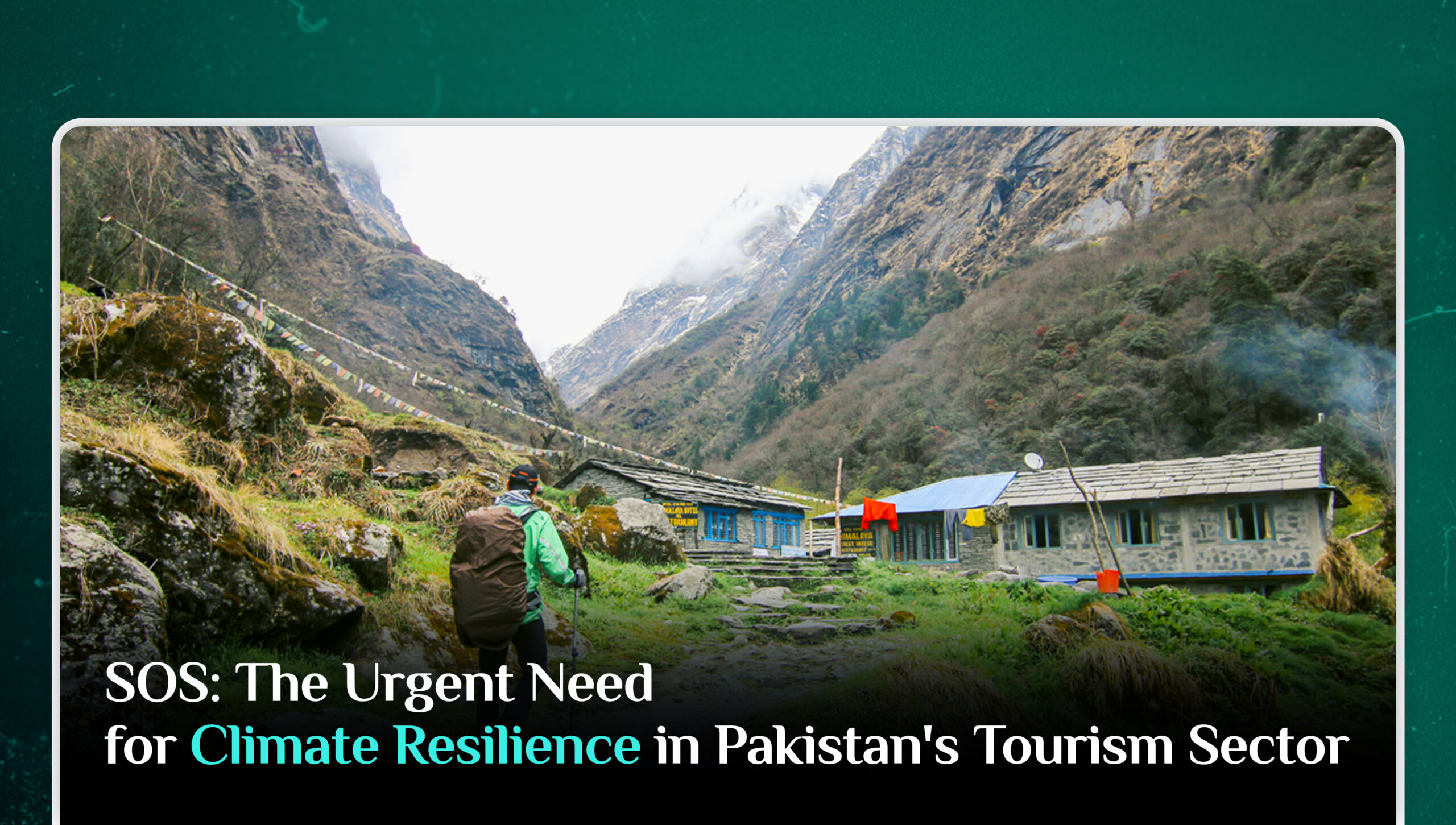Pakistan, a land of breathtaking landscapes, diverse cultures, and rich history, has always been a haven for travelers seeking adventure and exploration. From the majestic peaks of the Himalayas in the north to the pristine beaches in the south, Pakistan’s tourism potential is vast. However, this potential is under severe threat due to the increasing impacts of climate change. In this detailed blog, we’ll delve into the pressing issue of climate resilience in Pakistan’s tourism sector and the urgent need to address it comprehensively.
The Threat of Climate Change
Climate change is no longer a distant threat; it is happening right now, with significant and detrimental impacts on Pakistan’s environment and ecosystems. The following are some of the prominent consequences that are affecting the country’s natural beauty and heritage:
Glacial Melt
The Himalayan glaciers in the northern regions of Pakistan are rapidly melting due to increasing temperatures. These glaciers are the primary source of water for many of the country’s rivers and are crucial for maintaining ecosystems and providing drinking water and irrigation. The loss of these glaciers not only threatens water resources but also affects the aesthetic appeal of these regions.
Flash Floods and Landslides
The increased frequency and intensity of heavy rainfall events have led to devastating flash floods and landslides in many mountainous regions of Pakistan. These events pose a significant threat to both local communities and tourists, often causing loss of life and property damage.
Reduced Water Availability
Changing precipitation patterns and glacial melt are affecting water availability in many regions. This not only impacts local communities but also limits the potential for recreational activities such as white-water rafting and fishing, thus affecting the tourism sector.
Extreme Heat
The rising temperatures can make outdoor tourism activities uncomfortable and even dangerous, especially during the summer months. It affects the well-being of tourists and may deter them from visiting these regions.
The Impact on Tourism
The tourism sector in Pakistan has been growing steadily in recent years, but it is highly vulnerable to the impacts of climate change. Here’s how these climate-related challenges affect tourism in Pakistan:
Reduced Attractiveness
The degradation of natural landscapes due to glacial melt, landslides, and flash floods makes these areas less appealing to tourists. The loss of natural beauty diminishes the country’s tourism potential, as visitors seek unspoiled, picturesque locations.
Safety Concerns
Flash floods and landslides pose a significant risk to tourists visiting mountainous regions. Tourists may feel unsafe and reluctant to explore these areas, affecting the tourism industry’s reputation and visitor numbers.
Economic Impact
The tourism sector is a significant contributor to Pakistan’s economy. Any decline in tourism due to climate-related concerns can have severe economic repercussions, including loss of jobs and revenue, especially in the regions highly dependent on tourism.
Seasonal Shifts
Changing climate patterns may lead to shifts in tourist seasons. For example, if certain areas become too hot or prone to extreme weather during the summer, tourists may choose different times of the year for their visits. This can impact the business operations in these areas and lead to unbalanced tourism demand throughout the year.
The Urgent Need for Climate Resilience
To ensure the sustainability of Pakistan’s tourism sector, urgent actions are required to build climate resilience. Here are some key steps that can be taken, focusing on their detailed implementation:
Sustainable Tourism Practices
Encourage sustainable tourism practices that minimize the impact on the environment. This includes promoting responsible trekking, camping, and wildlife viewing, while also educating tourists on Leave No Trace principles and local customs and traditions.
Infrastructure Resilience
Develop and upgrade infrastructure in a manner that can withstand extreme weather events. This involves a detailed assessment of vulnerable areas and the use of climate-resilient construction materials and techniques. Road networks and accommodation facilities need to be made more robust to withstand flash floods and landslides.
Education and Awareness
Increase awareness among tourists about climate-related risks and precautions to take while visiting different regions of Pakistan. This can be done through detailed, region-specific guides and websites, as well as informational sessions conducted at various tourist hubs.
Government Initiatives
The government must take proactive measures to adapt to climate change by implementing detailed policies and regulations that protect natural habitats, conserve water resources, and reduce greenhouse gas emissions. This includes incentivizing businesses to adopt sustainable practices and setting emission reduction targets.
Community Engagement
Involve local communities in tourism development and ensure they benefit from the industry. This can be achieved by promoting community-based tourism, where local people actively participate in and benefit from tourism-related activities. It is essential to consult with these communities and consider their opinions in planning and decision-making processes.
Research and Monitoring
Support detailed research and monitoring of climate change impacts on the tourism sector. This information can help in planning and implementing effective strategies. It is crucial to gather data on climate patterns, disaster risk assessments, and economic impacts to tailor responses effectively.
Conclusion
Pakistan’s tourism sector is at a crossroads, facing a growing threat from climate change. Urgent, detailed action is needed to make the sector more resilient to these challenges. Sustainable practices, resilient infrastructure development, comprehensive education and awareness campaigns, and the active involvement of the government and local communities are all crucial components of this endeavor. It’s time to safeguard Pakistan’s natural beauty and cultural heritage for future generations and ensure that tourism remains a source of pride and economic prosperity for the nation. Addressing the issue in a detailed manner is the key to ensuring a sustainable and resilient tourism industry in Pakistan.
This article is written by Radma Noman. Radma is a research analyst at the Iqbal Institute of Policy Studies (IIPS).



Leave a Reply